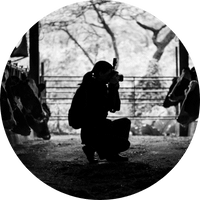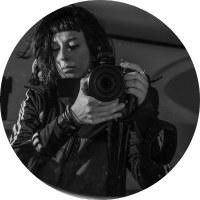Celebrating Women in Animal Photojournalism
For International Women’s Day 2024, We Animals Media (WAM) is putting the focus on women in animal photojournalism (APJ) and celebrating the hard work of women around the globe who are leading the charge for animals with a camera in hand.
We asked what being an animal photojournalist means to them. Watch our short video to hear what they had to say.
“Women’s work is historically less noticed and celebrated but the animal advocacy movement is made up of 60 to 80 percent women. I’m really proud that we’re building an international community of photojournalists. We’re building a community of support and celebration and learning.” – Jo-Anne McArthur, We Animals Media Founder

The lack of gender diversity in photojournalism has been an issue since its inception and part of a wider diversity issue in photojournalism. But we’re starting to see a shift in the gender divide as more women are documenting the issues they care about.
A wonderful example of this is at We Animals Media itself. Not only was our photojournalism agency female-founded, our network of international photojournalists is made up of 68 percent women. Women are a driving force behind animal photojournalism!

“When we think of animals in the media, we usually think of wild animals, but we generally fail to realize how underrepresented the actual majority of the animals are.”– Selene Magnolia, animal photojournalist
“The stories I work on might be difficult for me personally at times and also for someone seeing those visuals. But I think it is the need of the hour to create awareness and mindset change… It is important for me to document these ignored, misunderstood and misrepresented stories, which are actually all interconnected.” – S. Chakrabarti, animal photojournalist and filmmaker

A worker onboard the fishing vessel Fasilis shovels fish back into the sea. During the sorting process, unwanted fish (bycatch) are sorted into piles on the deck, where they lay suffocating until they are eventually tossed back into the water. Many do not survive. Greece, 2020. Selene Magnolia / We Animals Media
Fishermen separate different kinds of small fish and crustaceans on a trawler. Once the main load of fish is removed from the boat, the fishermen go through the bycatch and recover catch that they can use. This will be mostly for their personal consumption or to be sold in their neighbourhoods. Kakinada Harbour, Kakinada, Andhra Pradesh, India, 2022. S. Chakrabarti / We Animals Media

“Why do I think that women are leading this field? I think there’s probably a lot of reasons. One of them could be because we finally have role models because we see other women in this field and other women doing this work, and it encourages us to do the same.” – Amy Jones, animal photojournalist
Chickens and a duck are packed tightly inside a wire cage at a live animal market where they will soon be slaughtered for meat. This photo was documented at the start of the COVID-19 pandemic. Vietnam, 2020. Amy Jones / Moving Animals / We Animals Media.
Feeling inspired?
Learn more about animal photojournalism and We Animals Media’s work:
- Read our introductory explainer, What is Animal Photojournalism? and check out these APJ resources
- Register for the We Animals Media Photography Masterclass
- Find out how to become a We Animals Media contributor
This International Women’s Day, explore our Women in Animal Photojournalism gallery and learn more about this important work.
Donate today and help us keep our animal photojournalists in the field documenting these important stories.
More like this from We Animals Media:
Havva Zorlu’s 2023 Animal Photojournalism Fellowship
by We Animals Media | Feb 16, 2024
We Animals Media in 2023: A Year of Growth and Impact
by We Animals Media | Dec 20, 2023
100 Photographers Bringing You Animal Stories
by We Animals Media | Jul 18, 2023









